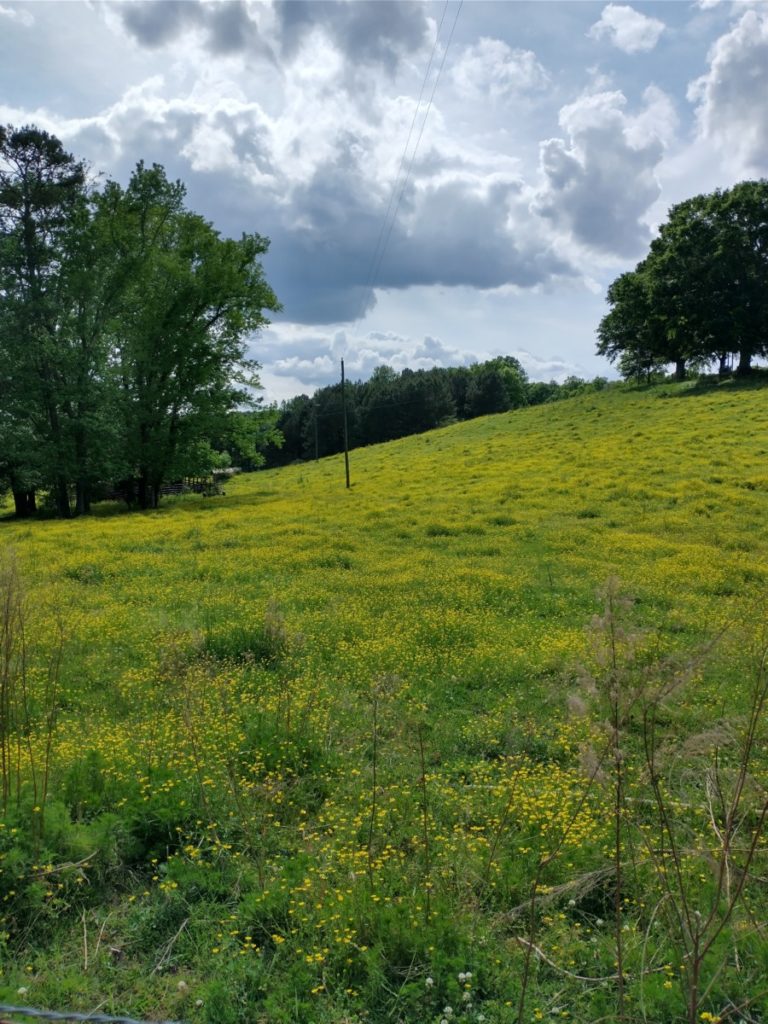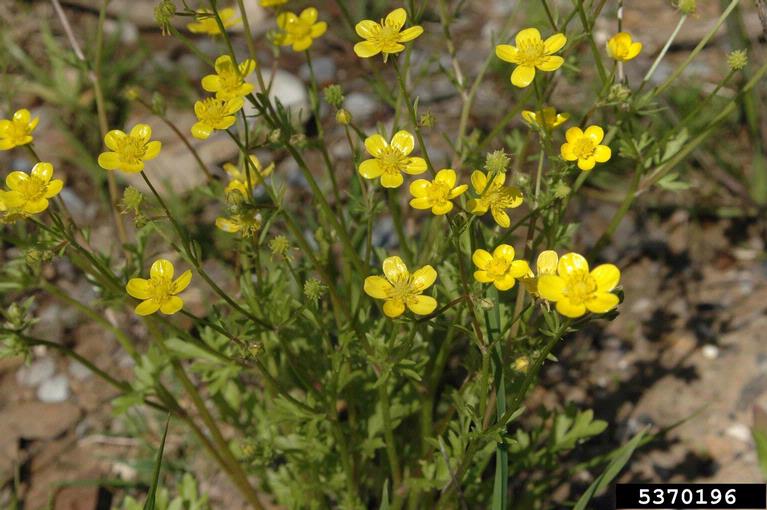Written by: Heather Kolich, Forsyth County Extension Coordinator, University of Georgia
Driving around the county recently, I’ve noticed numerous pastures with some to a lot of coverage in blooming buttercups. While the yellow flowers add pleasant color to the landscape, their presence in the pasture is a potentially toxic nuisance to livestock.
BIOLOGY
Buttercups (Ranunculus spp.) are broadleaf, cool-season weeds. They emerge in the fall, usually from seed, although they can persist as short-lived perennials. They grow through the winter months and bloom in spring. Flowers produce seeds, which means that sea of yellow blossoms is laying down a hefty seedbank to germinate next fall.
Buttercups contain an irritating oil that releases a toxin, protanemonin, when the plant is crushed through chewing. The toxin can cause blisters on lips and in the mouths of grazing livestock. Signs of ingestion poisoning include diarrhea, convulsions, and death. Mature buttercups – those that are at the flowering stage – contain more toxin than immature plants. Fortunately, buttercups are so bitter that livestock generally avoid eating them. It becomes an issue, however, when other forage is in short supply.
Low forage supply may be the case if you’re seeing a lot of buttercups in a pasture. They tend to grow where forage stands are thin and in pastures that have been over-grazed during the fall.

Photo: Heather Kolich, University of Georgia
CONTROL PLAN
There are several post-emergence herbicides that offer excellent control of buttercups, but they are most effective when applied in the fall and winter when the weed is young. Herbicide treatment on mature weeds is much less effective. Mowing mature buttercups down, ideally, before they flower, is a good control method in the late winter to early spring. Eliminating the plant’s ability to flower means fewer seeds are added to the field to germinate and grow in the fall. Exhausting the seed bank is the ultimate goal, but that requires several seasons and a trio of management methods.
Step one – Plan your herbicide treatment for November or December, shortly after the buttercups emerge in the fall and while temperatures are still warmish (55 degrees or higher) for several days after treatment. Below is a list of pasture herbicides that provide excellent control of buttercups, along with the grazing and hay cutting restrictions for each. Before making any pesticide application, read the label directions and follow them. Application rates, reentry intervals, pre-harvest intervals, reapplication intervals, and grazing/hay cutting intervals are important for environmental, human, and animal safety.
• 2,4-D is a widely used, broadleaf weed herbicide and is a component of several pasture weed product formulas. Do not graze lactating animals for 14 days after application; do not cut hay for 30 days after application.
• ForeFront or GrazonNext products combine 2,4-D with aminopyralid for a broader range of weed control. There are no grazing restrictions with these, but wait seven days before cutting hay. The chemicals persist in manure, so moving animals that have grazed a treated pasture to another area could injure broadleaf plantings. Because of this persistence, storing hay or applying manure to any place that broadleaf plants are desirable, such as vegetable beds, is not advised.
• Crossbow is a blend of 2,4-D and triclopyr. It has several grazing and hay cutting restrictions that vary by application rate.
Step two – Establish a healthy stand of pasture grass – tall fescue, bermudagrass, orchardgrass, etc. – to help choke out weed seedlings. I recommend soil testing and making the recommended amendments as part of seed bed preparation for planting.
Step three – Monitor pastures throughout the winter and early spring and mow down or spot treating emerged buttercups before they get a chance to flower. This helps deplete the seed bank over the next few years.
This three-step approach, applied year over year, is useful for managing other annual pasture weeds, as well.
Originally written and published in the Forsyth County News Sunday Column, Issue date: 05/06/2022
